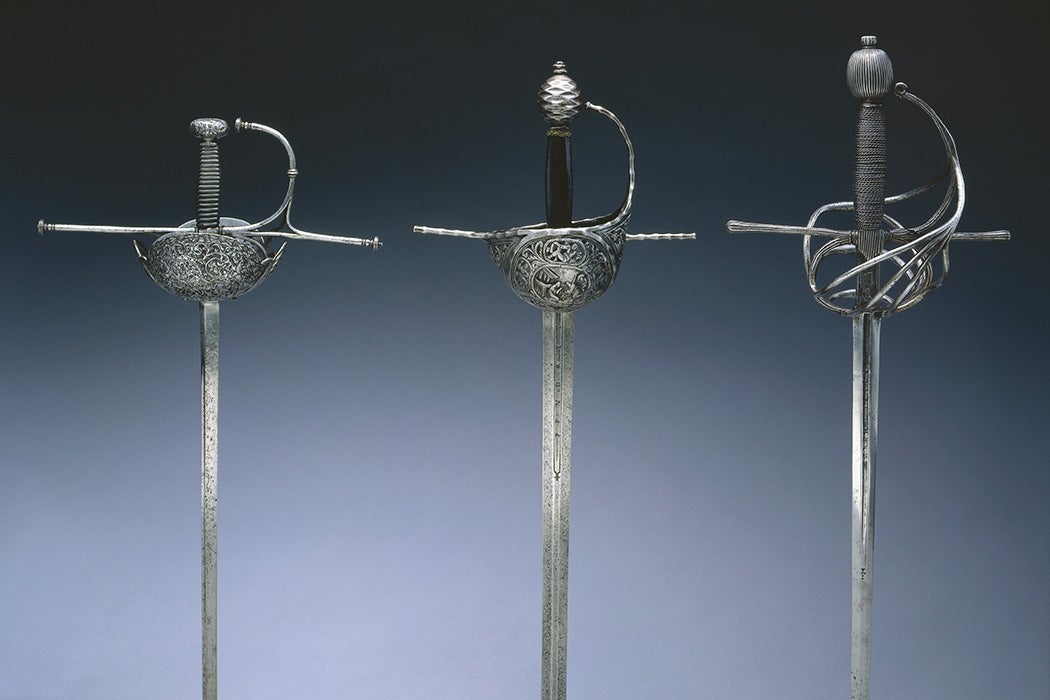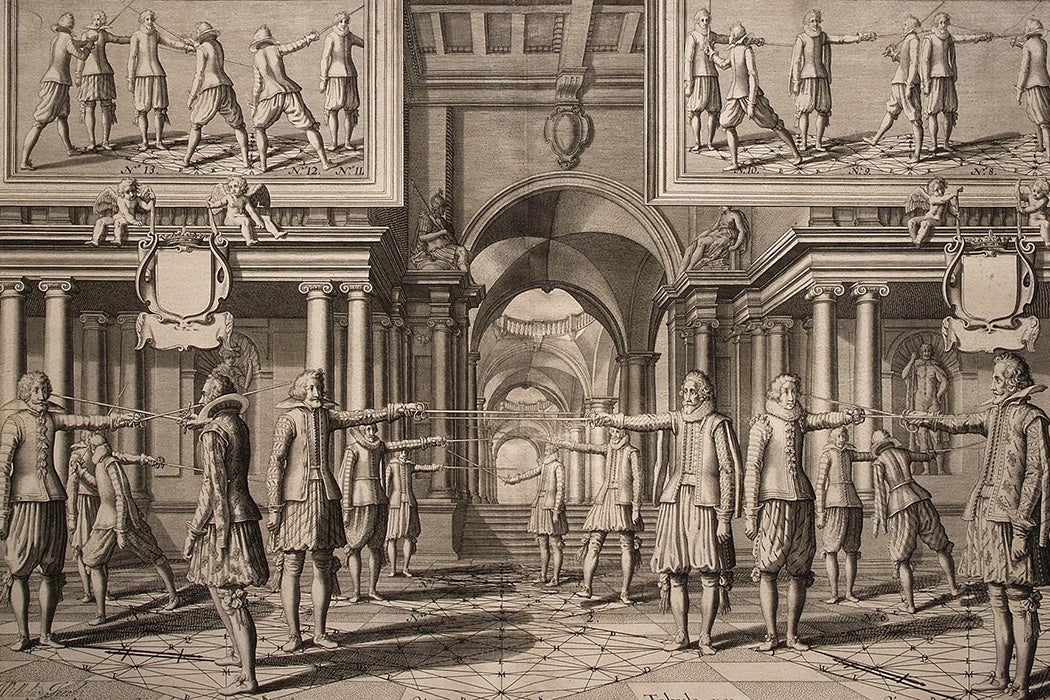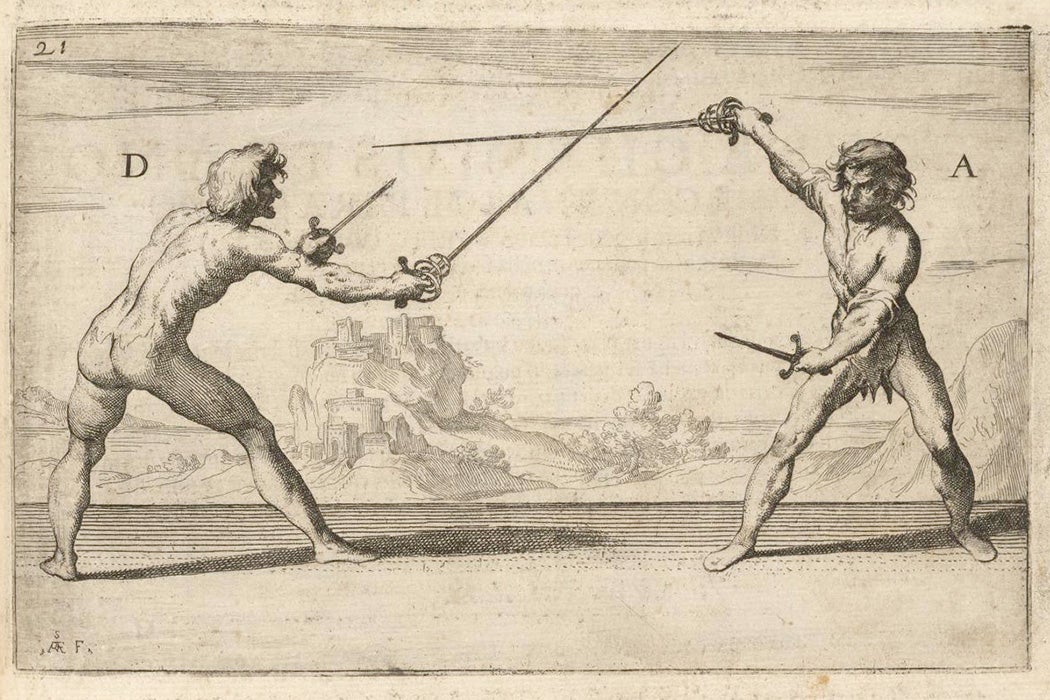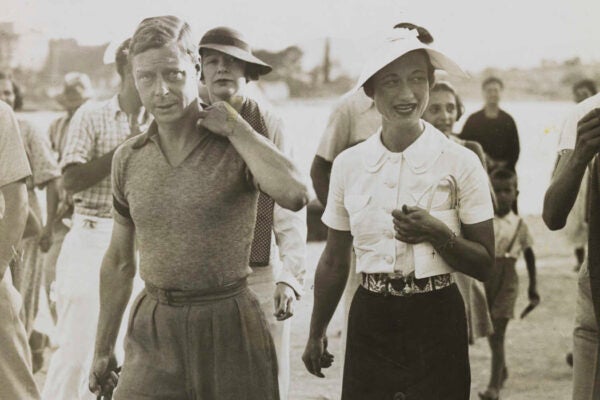“There was an Italian teacher of Defence in my time, who was so excellent in his fight,” writes fencing enthusiast George Silver, c. 1599, “that he would have hit anie English man with a thrust, just upon any button in his doublet.”
Historians have identified the fencing teacher as Rocco Bonetti, founder of a highly controversial sword-fighting school in Elizabethan London. The school was beloved by its aristocratic clientele—Bonetti hung the walls with blown-up illustrations of his students’ coats of arms and kept a stand of gilt-edged paper, just in case any of them wanted to write a letter—but detested by the local English fencing masters.
This simmering resentment proved fatal to Bonetti. He was challenged outside his school by a local named Austin Bagger, who not only stabbed him in the hands and feet, but trod on him afterward to show his contempt. Bonetti died of the wounds.
At the time, London was swept up in the moral panic surrounding the adoption of the rapier. Long, slender, and razor-sharp, the rapier was usually paired with a second weapon—a small, left-handed parrying dagger—rather than a shield. The dagger came to be elaborated into striking, creative forms—sawtoothed blades that could be used to capture and control the opponent’s sword, or “trident” daggers that split into three at the press of a spring.

To the eyes of English fencers, the rapier was a threateningly foreign instrument, one suited to a more aggressive fighting style. Yet advocates of the English style found themselves backed into a corner. They could argue that the rapier was a more dangerous weapon (Silver wrote lengthily of the “great slaughters” it caused), but that reflected rather embarrassingly on their own swordsmanship.
To resolve the question, Silver proposed what he called a “very requisite & reasonable” trial: giving the foreign fencing-masters their choice of weapons, he would have them play three bouts apiece with “three of the best English Maisters of Defence,” three bouts with “three unskilful valiant men,” and three with “three resolute men half drunke.” If the foreign masters could defend themselves against all those comers, they would be “honored, cherished, and allowed for perfect good teachers.”

No doubt Silver was inspired by the many similar trials he would have witnessed in his day. The “Masters of the Noble Science of Defense,” as they styled themselves, were the incorporated body of English fencing-masters. To become a master swordfighter in Shakespeare’s England, you had to fight your way to the top—literally. “Prize-playing” competitions were a public spectacle, in which budding scholars of the blade were obliged to take on anywhere from one to twenty-three competitors, while rowdy crowds threw coins onto the stage.
It was a form of entertainment as well as a test. The same stages that served for theater performances one night might host a prize-playing competition the next. And there was a great deal of overlap between fencers and actors, many of whom studied swordfighting in order to give more convincing performances on stage.
After all, as theater historian Jay P. Anglin points out, the average audience member
would surely have distinguished in minute detail the differences between foreign and domestic codes of swordsmanship, might well have traced the actors’ skills to the pedagogical efforts of one or another master of defense then plying his talents in London, and, yeomen and aristocrats alike, would undoubtedly have felt themselves expert critics of an athletic ritual rich in historical association and accumulated lore.
In fact, they might well have been armed while they watched (as suggested by an edict of the era, banning audience members from carrying swords into the theaters). And, on the stage, the old boast about Bonetti returned—immortalized in Shakespeare’s Tybalt, “the very butcher of a silk button.”
Support JSTOR Daily! Join our membership program on Patreon today.







